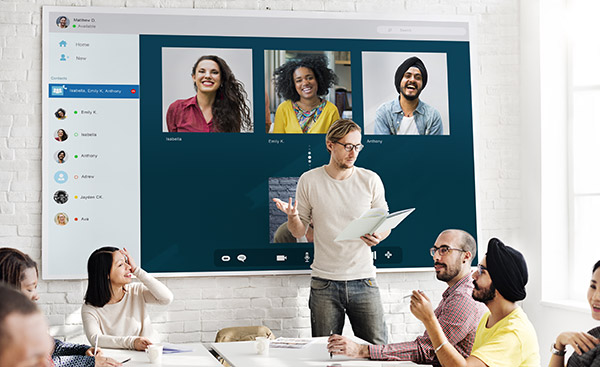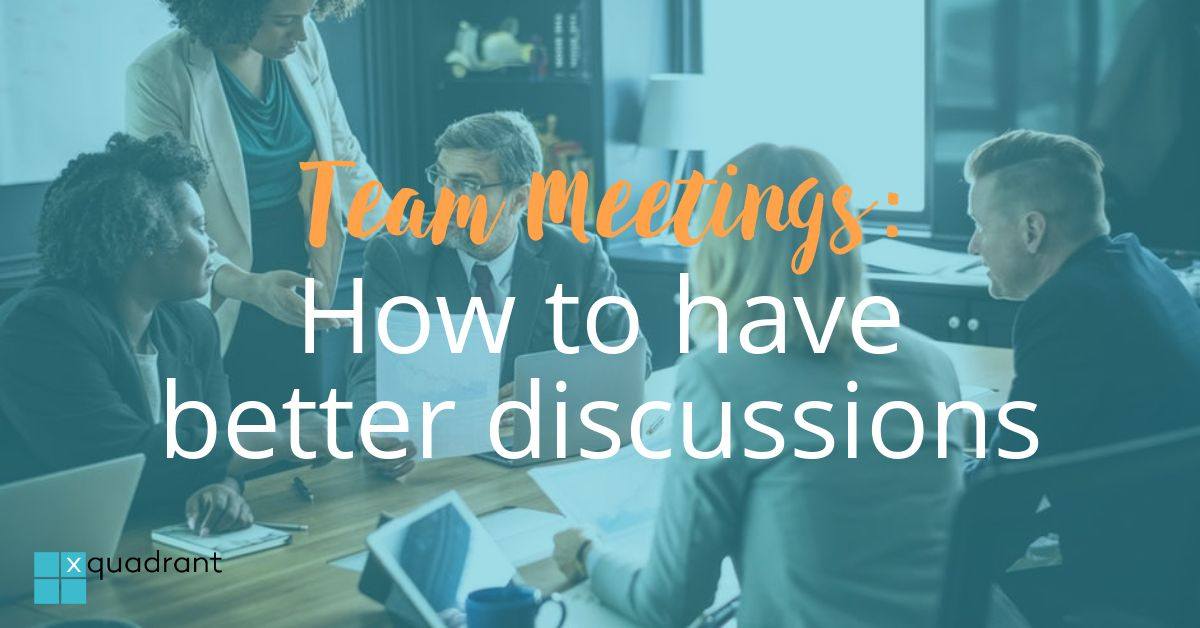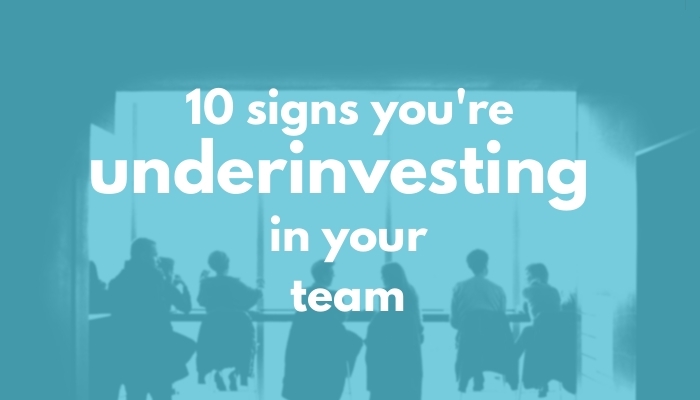When you’re navigating complex, volatile and uncertain times, it’s incredibly valuable to step back as a leadership team and plan some bold moves.
But when a physical leadership retreat may not be possible, is it really worth thinking about a virtual leadership offsite? Isn’t that just too painful?
In this article we put forward some bold virtual leadership retreat ideas and explore how you can make a virtual offsite something that makes a transformative impact for the months ahead.
PART I. Should you consider a virtual leadership retreat or offsite?
A physical leadership retreat may not be possible right now
Even though the worst of the coronavirus lockdown seems to be behind us in most countries there's still a huge amount of uncertainty.
More...
The reality is that for many leadership teams, especially global teams, are unlikely to have a physical Leadership Retreat offsite for quite some time.

And yet these events, when done right, can create enormous value for the team and for the company - especially when you’re navigating complex, volatile and uncertain times like right now.
Leadership retreats are (or can be, and should be) precious times to step back, strategise, get creative and improve the dynamics and working habits of the team. To ‘sharpen the saw’ for the months ahead.
So the problem is that there's great value in getting the team together, but for many leaders it's going to be difficult to do that for at least several months.
But a virtual leadership offsite sounds painful and risky…
Let’s face it, nobody really wants to sit on Zoom calls for a couple of days.
It’s painful, generally uninspiring, and tiring.
And there’s also a big risk involved. Even the best-orchestrated virtual events can be a big flop.
At Cisco we transitioned our Global Sales Meeting (GSM) - where 20,000 people would fly into Las Vegas every year - into a virtual event called the Global Sales Experience (GSX).
The Cisco GSX was very well put together on a technical level… and yet it failed to really create the motivation, the excitement and the engagement that these events were designed for. Everybody was extremely happy when the signal was finally given several years later, that we'd be going back to Vegas.
So I acknowledge the stakes are high. If you as a CEO or senior leader are going to bring your leadership team together even virtually for a significant amount of time you owe it to them not to waste their time.
And so there’s a sense of fear, with stepping out of the tried and true:
In the light of all this, what are the options available to you as the leader? Is it true that there really isn't a good way forward at this point? Do we really have to wait until we can all get on planes again and for social distancing rules to be relaxed?
The opportunity to “do an Amazon”
To answer this question, perhaps we have to do some assumption-busting and question the received wisdom around online vs. physical.
First off - it’s not like physical events are always amazing. In the corporate world I sat through many ‘handle-turning’ off-sites, dull meetings filled with presentations I really didn’t need, pointless “team building” activities that did nothing of the sort, and plenty of workshops where we came up with a whiteboard full of action points and issues, only to do pretty much nothing with them afterwards.
Well, what about online?
Do you remember many years ago when people saw Amazon as an inferior alternative to a real book seller?
In a physical bookstore, you could pick up the books have a read. You could browse. It seemed that buying off a web page would be incredibly inferior.
However, Amazon managed to turn the tables and online purchasing became in many ways a better experience with personalised recommendations, the ability to preview books read reviews and pay in a frictionless way.
Amazon turned the impossible into the possible and reversed the value equation. Let's do the same with leadership retreats.
Virtual leadership retreats - “even better than the real thing”?
In this article, I want to suggest that virtual leadership retreats are indeed possible, valuable, and indeed transformational when you do them right.
Helping CEOs and other senior leaders build transformative value creating leadership teams is a big part of what we do at Xquadrant. I've been to and led leadership off-sites and retreats in venues around the world. And I've been a participant in those same events for many years before myself in the corporate world.
Whilst we still love physical events, we’ve been working very hard at addressing and resolving the roadblocks associated with remote/virtual events, to create standout transformational events for senior leadership teams that can actually be better than “the real thing”.
We’ll start by discussing design, then move onto execution.
As an additional resource to help you implement this advice, we recommend you download our checklist to make a success of your virtual leadership retreat. It will help you think more broadly about what you want to achieve and the tools you have to make your virtual meeting a powerful experience for the entire team.
PART II. How to design a successful virtual leadership retreat or offsite
First off we need virtual leadership retreat ideas and goals, and bring those ideas and objectives together in a powerful design that will actually take us to where we want to go. This is true of physical events true - and rarely done - but moving online is a great reason to make the effort to create something extraordinary.
Here are six virtual leadership retreat ideas and design principles to incorporate:
1. Design an experience, not an event
At Xquadrant we’ve designed events with transformational experience coach Denise Cannon who has designed the journeys of Singularity University, and many other incredible organisations.
She always recommends starting with three questions to govern the design of any event:
With this in mind when thinking about virtual leadership retreat ideas, what's the journey that you want your executive team to go on? What’s the before, the during and the after?

Rather than seeing the event as the specific 8 or 24 or 48 hours when we're together, what would change if we actually created an experience - a journey with a start, middle, and end?
The idea of turning a business meeting into an experience is possibly outside of your comfort zone.
You know you can build quite a workable face-to-face offsite: some update presentations, some strategy discussions, a meal out and a nice hotel. And indeed that’s a safe solution - although probably not transformational - but it doesn’t really work in a virtual context.
So - back to “thinking like Amazon” - what’s the opportunity to really raise the bar in a virtual format?
➥ Clarify your know/do/feel outcomes
Write a one pager to capture what you would like from your event when thinking about virtual leadership retreat ideas. Specifically answer the three questions:
Then write down any other criteria that would make the event a success for you, what has to be true and what has to be not true by the end of the event.
➥ Define the mission
With your 3 outcomes in mind, what is the “mission” of the retreat and why does it matter? Write it out into a single sentence that you can share with the team, and that captures the goal and the stakes.
For example: “Our mission for this virtual retreat is to identify the three biggest initiatives for the coming year and to improve how we work together as a leadership team, so we can hit our 20% growth target - and do so with more focus and teamwork and less distraction and drama”.
➥ Outline the before/during/after
With your outcomes and mission in mind, think through the main arc of engagement. Brainstorm all your virtual leadership retreat ideas using the tools and ideas from this article and whatever else you can think of.
Think about what the touch points might be before, during and after the main event. What’s the journey here?
Some of these may be very business focused. For example, how are you going to design in follow-up and closure on the decisions and actions from the event?
And some of these might be a little bit silly and fun. Perhaps before the event you get people to record some kind of video and share it with a group about their own expectations for the events. Perhaps you create a WhatsApp group or especially for the event, or perhaps run a survey where people start to share ideas and expectations.
2. Master momentum
It's important to give your event a sense of momentum of progress. There are three ways to do that. Keep them in mind when thinking about your virtual leadership retreat ideas.
➥ Set clear finish lines
As you design your event, look for ways to create a sense of momentum and constant achievement.
Sitting on Zoom or Teams permanently can be energy draining - so think about what is the finish line that you would like to achieve each hour. Make it crystal clear and compelling - so not just “review the financials” but “understand the 3 biggest insights from our recent financials and agree one corrective action”.
Imagine you were having to market each session to the team. Would they sign up, voluntarily?
➥ Show the wins stacking up
And - here’s a thing not often done - notice and celebrate when you hit the finish line for each session! It also helps discussions from not going off a tangent and keeps people engaged.
It could be great to show this visually, that actually things have been accomplished, decisions have been made, progress has been achieved.
For example, bring up a checklist of the specific “finish lines” for all the sessions and check them off after each session, so people can see the progress building up.
Human beings love to win and make progress, so finding visual ways to show and recognise success is is a key part of creating an experience.
➥ Design processes not discussions
Actively design your sessions with a proper process to avoid your meeting simply being one long rambling discussion.
I see so many leadership teams use the “rambling discussion” as their #1 decision-making tool! It’s bad enough in physical meetings - and often there’s a sigh of relief when I step in with a process that’s designed to achieve the specific result the team is looking for - a decision, a prioritisation, a new set of ideas, a solution, etc.
In virtual off-sites, it’s even more painful to have rambling discussions, so be absolutely sure to design some powerful processes.
This involves creating a structured approach to reviewing information, engaging with information, voting, interacting, improving, discussing and deciding.
3. Stimulate the senses
Part of having a great experience is to create memorable moments and sensory stimulation is all part of creating memorable moments.
When the entire experience is virtual there isn't much sensory engagement, so get creative.
➥ Avoid screen sharing
You really don't want to be sharing your screen very much in your virtual off site, if at all.
Screen sharing takes up everybody's screen and turns a dynamic video conference into looking at a static PowerPoint slide. Screen sharing kills the human interaction by reducing your screen to just the content.
At the very best, all the faces become tiny thumbnails. You wouldn’t enjoy running your business meeting in a darkened cinema where you can't see anybody else but just what's on the screen, so don’t recreate the same experience online.
Instead, ask people to print out the materials ahead of time, or even send them a package with the materials ready printed.
This allows them to have the physical materials at hand. It gives them something physical to touch and engage with. And it frees up the computer screen to be 100% dedicated to engaging with the people, which is why people are there.
➥ The “box of delights” method
You may like to ask your event planner to create a box of surprises that you post to each individual participant and that you ask people to remove things from different times. This can be just a fun way to create surprise and interest, and a physical sensory experience.
For example, you could send everybody a T shirt and make it a bit of a fun experience at the start of the event by getting people to put it on. You could send them some kind of physical whistle or buzzer for use in some, some section of your off site, such as a quiz or other fun experience.
4. Rip up the script
It's very easy for people to enter virtual meetings on autopilot. Everybody knows what to expect and expectations don't tend to be high.
So…
This is where using various tactics can be helpful:
Any techniques you can find to rip up the script and get people to lean forward with curiosity are fantastic, bear this in mind when thinking about virtual leadership retreat ideas.
Again, this can be rather uncomfortable for many leaders: How will people react to these innovations? Will people find it frivolous? pointless? gimmicky? childish?
This is the inner game that you as a leader, are wrestling with. When you experiment, not everything is going to work - but are you prepared to follow through with that anyway to embrace the volatility associated with experimentation, so you can come up with an event that’s way more powerful overall?
As Freddie Mercury said:
“You can do anything you'd like with my music but please don't make me boring”
In the same way, you can do anything you'd like for your virtual leadership retreat but please don't make it boring.
Do anything you'd like for your leadership retreat - but please don't make it boring...
5. Engage the emotions
I've been in many, many executive leadership retreats, and most of them are very cerebral. And, I get it. I've been in strategy for over 20 years. And it's nothing more that I like better than exploring complexity and conceptualising. But memorable transformational events, always involve emotion.
And yet, so often in business. We focus on what's exclusively on the cerebral. If you want to create something that's transformative and memorable, you absolutely need to engage the emotions, keep this in mind when going through virtual leadership retreat ideas.
How are you going to engage with the emotions of your leadership team in a virtual event?
First step is to understand what emotions you would like to engage. As we mentioned, how do you want people to feel after your event?
➥ ”Show, don’t tell” learning experiences
Think about the information that you would like to share, and what you’d like the team to understand. Then consider how you can deliver that learning in such a way that it delivers an emotional punch.
For example,
- If you've identified that you’re failing to serve customers in a particular way, tell the story of an individual customer so that people can feel the way this specific person is being let down, and ‘get it’ on an emotional level.
- If you want people to understand how complicated or wasteful your system is think about how you can create an experience where they can discover this themselves rather than being presented the facts on the PowerPoint slide.
One company realised that their purchasing systems were all over the place. Instead of providing a bunch of facts and tables, the leader collected about 50 different gloves from around the operation, found out how much the company paid for each, and stapled the price to each glove.
When the team arrived, they found a huge pile of gloves in the table. When they examined this pile they found that basically identical gloves had vastly different costs. Some were $1, others we $10.
“What the heck is all this?” they wondered, and then it was revealed that all these gloves had been purchased by the company in different departments at various times.
This created a profound, visceral feeling of waste and inefficiency amongst the leadership and a genuine resolution to “fix” procurement as a matter of urgency.
➥ Music, art, film, poetry
Using art in a business meeting is often the outside the comfort zone of many leaders.
But if you want to encourage your team to make make a bold decision, why not show a film clip of somebody making a bold decision?
If you want to ask people to see things from a different perspective, why not show a piece of art, where an object is depicted from a very different perspective?
6. Celebrate the community
One of the problems with web conferencing and video conferencing is that it encourages us to be even more transactional and task focused than normal.
It's incredibly easy to get onto a call, go on mute, deal with your emails, and once everybody has joined, get straight to business.
So when you're hosting a remote leadership off site, it's important to fight against this tendency and incorporate the relationship-building activities that you would normally do in a physical environment.
The trick of course is not to get too gimmicky but to create something that works. This is an important step to keep in mind when looking at virtual leadership retreat ideas.
In terms of design, what you are trying to create here is pride in the team, connection with each other, and satisfaction in what's been accomplished.
➥ Recognise Others
The first strategy is to recognise others. Take time for real acknowledgement and celebration.
In general, I recommend recommend recognising others and celebrating their achievements and their positive behaviours:
Doing both gives everybody what they want and it also reinforces the message that you value the right results and the right values.
➥ Dive in deep
To create a truly transformational and memorable experience, you need to go deeper with your team than you've ever been.
Transformation occurs when you get past the surface level of managing logistics and get into what makes people really tick, what people stand for, and what gets them excited.
Of course, you can continue to deliver on your tasks without going to this level of depth. But if you want to create genuine sense of teamwork, psychology safety and connection with each other then this is the way to go.
In one group coaching session I remember, everybody was ready but the energy level was clearly mediocre.
So I started off: “the thing I don't want you to know about me is…”
Now this is something that you can't prepare ahead of time otherwise it will be fake. You actually have to go and explain. So, I said the one thing that was truly scary for me to say in the moment. And I invited the other people in the room to do the same.
That level of vulnerability electrified the room. Someone else spoke up powerfully and vulnerability. The stage was set and the energy and commitment level soared.
Vulnerability and depth will take the team to a whole new level.
It's a lot of information to keep in mind when you're planning your event, so if you want an easy way to remember it all just grab our free checklist!
PART III. How to execute a successful virtual leadership retreat or offsite
With some virtual leadership retreat ideas emerging and a design taking shape, let’s turn our thoughts to how we’re going to make this virtual leadership retreat happen. There are 3 elements to consider here:
1. Assemble the team
As you prepare your remote leadership event, you may also want to consider bringing in some help to ensure it delivers on your business objectives and on the highly valuable time and attention your senior leaders will be setting aside for it.

Let's face it, event design is probably not in your personal zone of genius. And there are many other business priorities on your mind. So get others involved to make it a success.
➥ Who’ll design the event & logistics?
So perhaps somebody in your organisation can help you think through how to put on something transformational, as well as manage logistics.
➥ Who’ll deliver the personal transformational side?
It's also good to think about the personal transformation side. There’s no business transformation without personal transformation - so working with a coach or other specialist can be great in this regard.
(Shameless plug - if you’d like a senior leadership team offsite, physical or remote, that’s unforgettable and transformative, and you want powerful coaching and facilitation, then get in touch…)
2. Structure around energy
When you're running a virtual site, it's incredibly important to manage the energy levels up of participants. Now if you're doing everything else that I'm suggesting in this post. People are going to be engaged and excited about what's going on. However, there is still the physical reality that staring at a screen for hours on end is tiring.
➥ The 45+15 Rule
Even in regular meetings. I'm starting to move to a rhythm of “50 minutes on - 10 minutes off” every hour. This gives people a chance to stretch and re energise.
I’d suggest that the same is even more important in the online world. Design 45-minute sessions with 15 minute breaks.
Even if you overrun slightly you can give people a full 10 minutes each hour to stretch, re-energise and get fresh for the next session.
➥ Manage daily schedule and pace
Virtual leadership retreats don’t need to be quite so intense as a physical meeting where you recap to make the most of the two or three days when you're all in the same location.
So manage energy, and divide what needs to be done over several days. Far better to do four three-hour sessions than two six-hour session!
As a rule of thumb, avoid sessions longer than 4 hours and target sessions under 3 hours.
However, do maintain momentum by grouping the sessions in a relatively short window - for example, one session per day for 5 days, or 6 sessions spread over 2 weeks. Don’t drag things out by running your event over more than two weeks.
3. Transform the technology
The technology strategy of your virtual offsite has two components, defensive and offensive.
Defensive involves dealing with the experience-killers and gremlins, and offensive involves using technology to create an experience that’s more interactive than a physical offsite would tend to be here.
➥ Technology defence: killing the gremlins
It's amazing when you think about it, that we spend so much time these days on remote collaboration tools, but we have not really built a system to ensure that we will get the best experience.
So, create a simple technical briefing sheet with a checklist of things to do and to check before the meeting begins. Cover at least these elements:
Ask everybody in the team to ensure they have a decent video, camera and connection.
If the only video they have is on their phone then ask them to buy a webcam for their PC or Mac. It's terrible to try to do a website on your phone, or even tablet. You simply don't see as many people on screen and it's not as immersive.
Figure out ways for people to test their video set up ahead of time. If they have a bad connection, explain how they can perhaps use a wired connection or a mobile connection to improve bandwidth.
It's also important to set up webcams so that they show not just the face, but also the torso. The upper torso and hands of participants. When people can see hands then there's an awareness that people are not multitasking. And there is also an openness and a trust factor, which is created. That's quite different from just seeing heads.
Ask people to adjust the lighting so that they are well illuminated. So many people still seem to take to sitting in front of a window turning them into the business equivalent of a mafia godfather. It's incredibly disruptive to try to adjust these issues once your off site begins.
It's far better to check these issues beforehand. You wouldn't book a physical conference venue where half the people sat in the shadows. And so you don't want to have that experience virtually either.
I strongly suggest that everybody is invited to invest in a $30 headset with microphone. The sound quality of people using their laptop speakers and microphone is simply inferior and imposes additional cognitive stress to everybody else who is forced to listen to them.
➥ Technology offence: democratising contribution
The great advantage technology brings is it can speed up and democratise the discussion.
People who may be very silent verbally can be given a chance to contribute on an equal basis with the loudmouths in the group.
This is one area where virtual retreats can truly be better than the real thing.
Here are several key technology elements to build into your experience design:
Breakout rooms are implemented in many video conferencing platforms such as zoom, and allow you to split your team of 15 into perhaps five groups of three or three groups of five.
Breakout rooms allow you to quickly have working discussions, roll up your sleeves on topics together and be able to come back to the main meeting just like you would in a physical workshop setting.
You get people speaking much more. You create parallel tracks. engagement and interaction and interaction go through the roof.
By setting up some key polls ahead of time, you can keep things lively by getting instant pulse checks of what people are thinking about certain topics.
It may seem gimmicky, but no - it's actually a fantastic way to quickly understand where people are and what they're considering without having to spend quite a lot of time going around the table each time and calling people by name.
It's important to create ways by which the whole team can actually create. This may be as simple as using a shared Google Sheet for joint brainstorming or by using one of the many tools available for white-boarding sessions. You can do many of the things you would do in a real environment virtually. For example, generating ideas, grouping them together, positioning them charts, voting on top issues and so forth.
The chat feature of many collaboration platforms is often misused, and it will be good to set guidelines ahead of time.
Do you want to use chat to encourage side discussions? Probably not. You won't be able to be focused on the issues at hand. But perhaps you do want to use chat to quickly go around the virtual table and get everybody's ideas about a subject.
For example:
Many platforms also have the ability to raise your hand or give a thumbs up. Again, consider if and how you want to use that as an engagement device, and explain to everybody ahead of time how it works and when they should use it.
For example, do you want to use the hands up functionality to signal that somebody wants to speak or are you happy for them just to jump straight in and interrupt?
Do you want to use the thumbs up feature as a way of getting a quick agreement on decisions?
You may well want to design some surveys or feedback forms to be used various points during the event. There really is no point in waiting until the event is over to find out how people are feeling about it. At the end of day one, do a quick survey to find out what's working and what isn't that allows you to course correct and iterate the event over the course of several sessions to really get something of value.
PART IV. Virtual Leadership Retreat Ideas: A Summary
Beyond the specific virtual leadership retreat ideas that we’ve outlined here, there’s a deeper challenge for you as the senior leader.
Do you want to play it safe?
Or do you want to play all-out?
You know how to do the safe one. The ideas above will help you lean into something a bit more risky, a bit more edgy, but something that will genuinely take your team forward. A true experience that shifts things, permanently.
Sometimes it helps to have an external coach and facilitator to take the team into new territory. If you’d be interested in learning more about how Xquadrant can help you do this, get in touch.
And before you go, you may like to download our complete checklist to make your remote leadership retreat or offsite a memorable and powerful experience.



